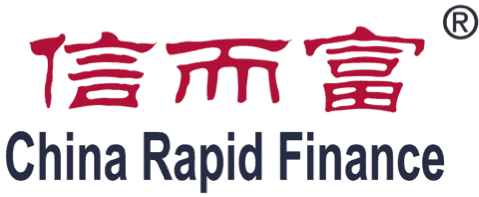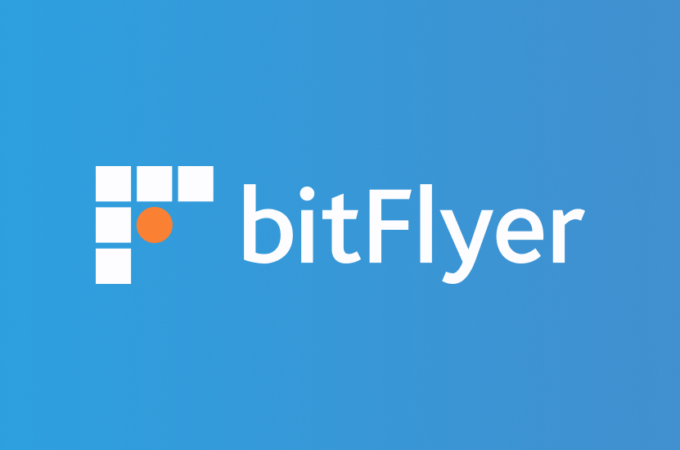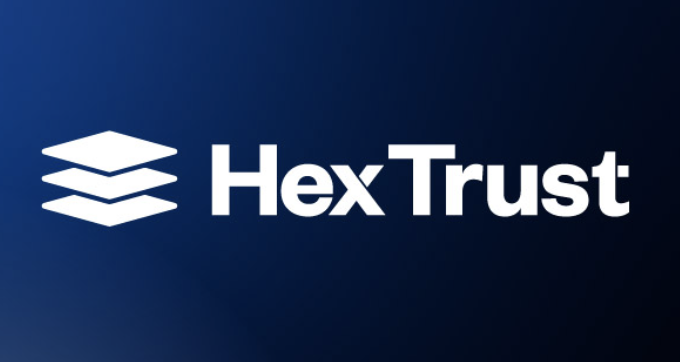
P2P – Lending
The P2P business model is starkly different from that of traditional banks and the opportunities posed by P2P lending may have significant impact on financial institutions.
Read our full research “Money of the Future”. Download PDF (20MB)
Goldman Sachs is seeking potential recruits from peer-to-peer lenders including LendingClub and Prosper to bulk up its new online-loan business, known as “Mosaic”. The firm reached out to workers in New York, where it’s based, and in San Francisco. Dozens of employees were targeted with expertise in areas including marketing, credit and engineering.
Goldman Sachs is looking to join startups that use technology to extend consumer credit more efficiently and at a cheaper rate, a departure for a company that’s historically steered clear of retail businesses. Unlike LendingClub, which connects investors with borrowers looking for personal loans online, Goldman Sachs will be funding loans through its deposit-taking subsidiary, Goldman Sachs Bank USA. The investment bank’s recruiting push among peer-to-peer lenders comes 10 months after Goldman Sachs helped LendingClub go public (FT Partners published a research dedicated to history of Lending Club development, its way to IPO and comparison of Lending Club stock multipliers with p2p-companies).
Consumer lending’s higher returns may help Goldman Sachs in its struggle to boost return on equity, a gauge of profitability that dropped to 7 percent in the third quarter from 11.8 percent a year earlier. The bank is seeking to move into more digital niches of the financial-services industry, such as online lending and initiatives with startups.
While online marketplace lenders once set out to disrupt traditional banking, many of them are now cooperating with Wall Street by teaming with banks, selling their loans to large institutional investors or helping to bundle them into securitized bonds. Blackstone Group LP, the world’s biggest manager of alternative assets, has also announced plans to make loans to individuals and small businesses.
P2P loan volume is poised to hit $77 billion in 2015, a 15-fold increase from just three years ago. And in a flashback to the subprime mortgage boom, P2P startups have begun bundling and selling off loans through securitizations. The business of matching lenders with borrowers online—which still amounts to only 0.08 percent of the $96 trillion in global corporate and household outstanding debt—may truly be an innovative way to distribute capital. But is P2P a revolution or just another bubble?
Money managers are betting it’s the former as they pile into one of the fastest-growing asset classes in finance. Some are taking equity stakes in P2P startups. In February, Third Point, the hedge fund founded by Daniel Loeb, led a $200 million investment round in Social Finance, which refinances student loans.
The deal valued the three-year-old San Francisco company, known as SoFi, at $1.2 billion. Others are investing in the loans themselves. In April, Victory Park Capital, a private equity shop in Chicago that backs a number of P2P platforms, announced it was increasing its funding pipeline for one-year-old Upstart Network to $500 million from $100 million.
Third Point and Victory Park are hardly outliers in pursuing loans that are generating 5 to 12 percent annual returns in an era of nonexistent interest rates. Goldman Sachs, BlackRock, Alibaba, and even Google are making deals in the space.
In the U.K., holders of tax-free savings accounts known as ISAs may even soon be allowed to invest in P2P loans, a move that could draw Britain’s top asset management houses and provide £150 billion ($220 billion) in fresh cash by 2020, according to Liberum Capital, a London investment bank. “Every single lending product that a bank provides is vulnerable to this model,” says Cormac Leech, a senior analyst at Liberum.
And now, Wall Street is cranking up the volume by running these loans through its securitization machine. In November, Morgan Stanley and Goldman led the sale of securities backed by $303 million in student loans originated by SoFi. In February, BlackRock unveiled the first investment-grade-rated package of P2P consumer loans with a $281 million offering of notes from Prosper Marketplace, a site that lets users apply for loans as well as back them. Such deals will help P2P platforms spread risk and multiply loan volume.
Peer-to-peer stalwarts counter that their industry doesn’t look like the toxic mortgage market of the 2000s. Many platforms in the U.S. and the U.K. post their loan books online so investors can analyze the quality and performance of their debt on a loan-by-loan basis. London-based RateSetter maintains a “provision fund,” which stood at £13 million as of May 14, to make lenders whole should borrowers default, a feature other sites are now imitating.
Most P2P firms also shun subprime borrowers. Zopa, a 10-year-old British firm that’s issued more than £800 million in consumer loans, approves only one out of five applicants. Both Zopa and RateSetter have default rates of less than 1 percent, while bad loans at LendingClub and Prosper are below 3 percent.
But as institutions pour money into P2P, some platforms may relax their credit criteria and welcome riskier borrowers to accommodate the flow, especially if they can offload risk through securitizations, says Michael Tarkan, an equities analyst at Compass Point Research & Trading in Washington who covers P2P companies. “There’s no need to loosen standards,” Laplanche says. “It’s all growing very fast, but it’s a controlled growth.”
In April 2015, San Francisco-based startup Prosper announced a new $165 million round of financing led by Credit Suisse NEXT Investors, and which included participation by J.P. Morgan Asset Management, SunTrust Banks and USAA, among others. The new funding raises Prosper’s valuation to $1.865 billion. The round also shows just how big investor appetite has gotten for startups offering tech-driven solutions to bypass traditional banking methods.
Both Prosper and rival Lending Club launched in 2006. In spite of the 2008 economic meltdown and a host of regulatory issues, the two emerged as credible financing alternatives with very real consumer demand. Prosper has issued more than $3 billion in total loans, while Lending Club has facilitated more than twice that amount.
But even as some startups seem to be shooting ahead—Lending Club is the clear leader of the pack so far, with such esteemed investors as Kleiner Perkins’ Mary Meeker and Morgan Stanley CEO John Mack sitting on its board, and even a little company called Google taking a minority stake—Prosper insists that it’s different in ways that will make it a winner in its own right.
Prosper CEO Aaron Vermut says his company is singularly focused on unsecured consumer credit loans—or loans that aren’t protected by any collateral. In the process, he says Prosper is growing.
“[Lending Club] used to be ten times bigger than us, and now they’re maybe two or two and a half times bigger than us,” Vermut says.
It’s no coincidence, Vermut says, that many regional banks and asset management groups participated in financing Prosper this time around. The move was strategic rather than a potential conflict, he explains, because small banks don’t traditionally offer unsecured credit loans, anyway. “We’re really good at lending credit to consumers,” he says. If that’s true, banks are going to want a piece of that action, whether they’re the ones lending the actual money or not.
 Y Combinator non-profit alum Zidisha launched its cross-border P2P lending platform in Haiti, its first Latin American market. According to its website, “Zidisha is the Swahili word for ‘grow’ or ‘expand,’ as in a business or a quality such as freedom or prosperity.” Prosperity is indeed the result it hopes to achieve through its crowdsourced loans, not only for borrowers but also for their home countries.
Y Combinator non-profit alum Zidisha launched its cross-border P2P lending platform in Haiti, its first Latin American market. According to its website, “Zidisha is the Swahili word for ‘grow’ or ‘expand,’ as in a business or a quality such as freedom or prosperity.” Prosperity is indeed the result it hopes to achieve through its crowdsourced loans, not only for borrowers but also for their home countries.
Before Haiti, Zidisha’s platform was already open to projects from Burkina Faso, Ghana, Guinea, Indonesia, Kenya, Niger, Senegal and Zambia. According to Zidisha’s stats page, its more than 20,000 members come from a total of 144 countries. The same page also points out that more than $3 million loan money has been raised through its platform, helping fund 13,450 projects to date.
 Here comes some more funding for a European financial tech company specialising in online loans. Germany’s Smava raised $16 million in funding led by Phenomen Ventures, along with existing investors Earlybird and Neuhaus Partners. Phenomen’s track record in fintech investments includes backing Prosper, the U.S.-based peer-to-peer lending marketplace.
Here comes some more funding for a European financial tech company specialising in online loans. Germany’s Smava raised $16 million in funding led by Phenomen Ventures, along with existing investors Earlybird and Neuhaus Partners. Phenomen’s track record in fintech investments includes backing Prosper, the U.S.-based peer-to-peer lending marketplace.
The investment takes the total raised by Smava to nearly $30 million. To date, Smava has loaned out $600 million through its platform, with the number of loan originations growing by 100% in the last year. It will also help the company compete against rivals. They include Auxmoney, which is backed by Index, Union Square Ventures, Foundation Capital, among others and also raised $16 million in 2014.
![]() Not only does this mean that VC interest in the sector shows now signs of slowing, but we’re beginning to see startups crop up who offer add-on services as part of the wider P2P lending ecosystem. One such company is LendingRobot, an automated investment service for online lending on the two leading P2P platforms, Lending Club and Prosper.
Not only does this mean that VC interest in the sector shows now signs of slowing, but we’re beginning to see startups crop up who offer add-on services as part of the wider P2P lending ecosystem. One such company is LendingRobot, an automated investment service for online lending on the two leading P2P platforms, Lending Club and Prosper.
The Seattle, U.S.-based startup has just raised approximately $3 million in a Series A round led by European VC Runa Capital, money it’ll use to further develop its product and to ‘accelerate’ growth. The problem that LendingRobot has set out to solve is an interesting one, and shines a little light on the way P2P lending has already matured. Using what it calls “high-speed automation software and machine-learning algorithms”, the service helps investors automate the lending process, based on pre-selected criteria, so that LendingRobot is able to select and invest in loans less than one second after they become available.
In addition to the speed advantage that automation affords, LendingRobot supports more than 40 different filtering criteria for Lending Club and Prosper Marketplace, and harnesses machine-learning/artificial intelligence algorithms to help select investments, such as taking into account how quickly and how much other investors have invested into a particular note. That way it’s possible to ride the coattails of those professional investors who have potentially put you at a disadvantage in the first place.
 China’s P2P lending marketplace is a flurry of competition, with numerous players having raised major rounds over the past year. But as of today, only one Chinese P2P lender can lay claim to having listed in the United States: Yirendai.
China’s P2P lending marketplace is a flurry of competition, with numerous players having raised major rounds over the past year. But as of today, only one Chinese P2P lender can lay claim to having listed in the United States: Yirendai.
As planned, Yirendai listed on the NYSE under the tag YRD, raising US$75 million in an offering of American Depository Shares priced at US$10 each. Yirendai is still majority-owned by CreditEase, a Chinese financial services company, and the company has been profitable for over a year. “Actually [the IPO] was a strategic decision for us,” Ms. Fang, CEO of Yirendai, said. “Getting the money was not our main goal.” Instead, Fang said, the IPO is more about showing prudence and building confidence with consumers at home in a market that’s pretty chaotic. “By disclosing all of our information and business details [to the SEC], we think it will help shape the industry in China.”
In that sense, Yirendai’s IPO couldn’t have come at a more opportune moment. Just as the company is listing on the NYSE, demonstrating that it passes muster with stringent SEC regulations, its largest competitor Ezubao has become embroiled in a scandal at home, with police investigators reportedly having detained employees over questions about illegal business practices.
If Yirendai wanted to use its IPO to demonstrate that it is different, Ezubao has certainly helped it to create a strong contrast. “The [Chinese P2P lending] industry is chaotic without regulation,” Fang said. “Without the right regulations and a good way of doing business, it’s really hurting market sentiment and the consumer.” The Yirendai IPO, then, is about trying to turn that ship around.
Yirendai and other services like to make their money by taking a cut of the returns (and sometimes also through additional fees). Yirendai also offers some additional services like “automated investment,” which matches lenders with borrowers automatically. Its website claims that in the past seven days, more than 4,100 loans have been issued through its platform, and more than 1.6 million users earned interest on the money they lent.
The company’s SEC prospectus claims that from its inception in 2012 to now it has issued US$1 billion in loans, with a year-on-year loan volume growth of 700 percent. It says that over the first six months of 2015 it had more than 62,000 active borrowers and more than 59,000 active investors/lenders, facilitating more than US$597 million in loans. During that same period, the company says it generated US$79 million in net revenue.
Yirendai says its market is expected to grow at a rate of about 25 percent per year over the next few years. But the company faces a lot of competition; China’s P2P market is both crowded and well-funded. This year, for example, we’ve seen Xiaomi-backed Jimubox raise a US$84 million series C, China Rapid Finance raise a US$35 million series C, Dianrong raise a US$207 million funding round, and FirstP2P raise a US$41 million series B, among many others. P2P lending in China probably isn’t a zero sum game – it may be that several of these companies can rise to the top together – but there’s no way everyone’s going to win.
 As mentioned, China Rapid Finance, which claims to be the country’s largest online consumer lending marketplace, has closed a $35M Series C led by Broadline Capital. The round pegs the company’s pre-money valuation of $1B. China Rapid Finance is reportedly gearing up for an IPO in the US. Founded in 2001, the company has already facilitated 2.5M loans on its platform, which connects borrowers and lenders.
As mentioned, China Rapid Finance, which claims to be the country’s largest online consumer lending marketplace, has closed a $35M Series C led by Broadline Capital. The round pegs the company’s pre-money valuation of $1B. China Rapid Finance is reportedly gearing up for an IPO in the US. Founded in 2001, the company has already facilitated 2.5M loans on its platform, which connects borrowers and lenders.
Part of its plans for its latest funding round is marketing to the 50M consumers it has already pre-screened. After years of tight control by the government, China’s consumer loan and credit card market is opening up. Many Chinese consumers, however, don’t have credit scores because there isn’t a ubiquitous system like FICO in the US.
 Peer-to-peer lending startup Jimubox has just secured $84 million in series C funding. It comes seven months after the Beijing-based firm attracted US$37 million from Xiaomi and ShunWei Capital, a venture capital fund headed by the phone maker’s founder, Lei Jun. This time round the lead investor is UK’s Investec Bank. Haitong Kaiyuan Investment also joined in, along with new investors Mandra Capital and Zhong Capital Fund.
Peer-to-peer lending startup Jimubox has just secured $84 million in series C funding. It comes seven months after the Beijing-based firm attracted US$37 million from Xiaomi and ShunWei Capital, a venture capital fund headed by the phone maker’s founder, Lei Jun. This time round the lead investor is UK’s Investec Bank. Haitong Kaiyuan Investment also joined in, along with new investors Mandra Capital and Zhong Capital Fund.
Existing Jimubox backers Matrix China Partners, Xiaomi, Shunwei, Ventech China, and Magic Stone Alternative also threw in some cash.
Peer-to-peer lending in China is one of the hottest – if not the hottest – business model in China’s venture capital scene right now. P2P lending startups are getting funded left and right, with new names entering the game each week. The pace of these companies flooding the market has risen so dramatically that we’ve largely given up on covering all of them.
China’s loan sharks come under attack from P2P lenders. Today there are more than 2,000 peer-to-peer lenders in China. Some of them are outright frauds, enticing lenders to hand money to non-existent borrowers. Others are loan sharks, charging exorbitant interest to customers desperate for short-term funds, as in Nanjing. And others extend credit on reasonable terms to small and medium enterprises, and individual entrepreneurs, who are either too insignificant or too iffy for the banks. Legitimate P2P internet lenders are slowly achieving critical mass in China, with the support of regulators frustrated by the banks’ reluctance to lend to small borrowers.
Many small enterprises are in the service sector, so they lack the collateral that banks demand. In addition, the internet lenders have created a virtual infrastructure, including a credit bureau set up by the Alipay unit of Alibaba, that is comparable with or even superior to that of traditional banks. And while they still account for a tiny percentage of Chinese credit flows, these firms are now being taken seriously by banks as gargantuan as HSBC.
China tightened control of online financing, saying it is looking to develop healthy industry growth amid criticism the platforms contributed to an equities plunge that wiped $US3 trillion off the market.
All client funds must be parked at established banks and Internet finance firms will need approval from financial as well as cyberspace regulators, the People’s Bank of China said. They must also provide sufficient disclosure and send risk reminders to clients. The sites offered 3.1 billion yuan ($US499 million) of new loans for stock investment in May 2015, about six times that of January. The People’s Bank of China will supervise online payments while the China Banking Regulatory Commission will oversee online lending, trust and consumer finance. The China Securities Regulatory Commission will handle equity crowd-funding and online fund sales, while insurance will be looked after by the China Insurance Regulatory Commission.
Peer-to-peer lending websites, which match borrowers with lenders, should serve only as intermediaries and are banned from “enhancing borrower credit worthiness” or raising funds illegally, according to the new rules. Online crowd-funding must not “mislead or cheat investors.” The PBOC added that Internet finance activities were bringing new problems and risks as there were “no market entrance threshold, no game rules and no regulatory oversight.” It will set up an Internet finance association and support financial institutions starting online businesses including in banking, insurance and securities-related offerings.
Experts estimates that 1,500 of the platforms may go bankrupt or have difficulty paying dues, up from 275 in 2014, while Dagong Global Credit Rating Co. has put more than 1,300 P2P companies on a blacklist that flags them as too risky and opaque.
![]() The CSRC said it would stop online sites from handing out new loans for share purchases, blaming some “information technology service providers” for illegal practices that it said contributed to the stock plunge.
The CSRC said it would stop online sites from handing out new loans for share purchases, blaming some “information technology service providers” for illegal practices that it said contributed to the stock plunge.
P2P lending growing very fast in India too. Lendingkart, a New Delhi-based platform for small businesses loans, has raised a Series A of $10 million from Saama Capital, Mayfield Fund, Shailesh Mehta, and Ashvin Chadha. Since launching a year ago, Lendingkart has processed loans from 50 cities and 17 states across India. It will use its new capital to expand into all towns and cities in India, improve its credit scoring technology, and hire more employees.
The startup is similar to LendingClub in that it allows businesses to apply for loans online, bypassing banks and other traditional finance institutions. Co-founder and chief executive officer Harshvardhan Lunia explains that Lendingkart’s algorithms use 1,500 data points to score credit application. The site claims that its application process takes just 15 minutes, with most loans approved in a few hours and disbursed within three working days.
 IndiaLends, a Delhi-based credit underwriting and analytics platform for unsecured consumer lending, has raised an undisclosed amount in funding led by Singapore-based DSG Consumer Partners, with participation from a few angel investors including private equity investor Siddharth Parekh. The startup, launched in March this year, plans to utilise the capital to grow its operations, improve technology and analytics capabilities and acquire talent. It also plans to expand its operations to other cities soon, starting with Mumbai and Bangalore.
IndiaLends, a Delhi-based credit underwriting and analytics platform for unsecured consumer lending, has raised an undisclosed amount in funding led by Singapore-based DSG Consumer Partners, with participation from a few angel investors including private equity investor Siddharth Parekh. The startup, launched in March this year, plans to utilise the capital to grow its operations, improve technology and analytics capabilities and acquire talent. It also plans to expand its operations to other cities soon, starting with Mumbai and Bangalore.
Peer-to-peer lenders Lending Club and Prosper set the stage for the lending marketplace boom, but the latest generation of lending tech is all about verticals. The marketplace model has been proven, and now entrepreneurs are tweaking it to fit all industries. Student loan marketplace SoFi‘s $200 million monster round in January, led by Third Point, is the largest round tracked to date.

“Auto loans as an asset class — different than real estate, gold, treasuries, bonds and stocks — historically have performed well and held up well through the recession,” says Ellis. “If you’re a high net worth individual or some sort of investment fund, you want options and you want attractive risk-adjusted returns.”
“Unlike some industries, where if you’re starting to go after certain verticals maybe you’re a little too niche, in this industry, you’re talking about massive markets that are still able to be disrupted,” says Dan Ciporin, partner at Canaan Partners and Lending Club board member.
 Orchard, a Canadian portfolio company, launched last year to simplify online direct lending at scale, and currently powers seven investment platforms, including Lending Club, Prosper, and OnDeck. Burton says there are 450 more currently on their wait list.
Orchard, a Canadian portfolio company, launched last year to simplify online direct lending at scale, and currently powers seven investment platforms, including Lending Club, Prosper, and OnDeck. Burton says there are 450 more currently on their wait list.
“As soon as you start talking to operations or accounting teams, you realize that the thought of trying to track $100 million worth of $8,000 loans is just terrifying — none of their systems are set up to deal with loans that small,” explains Matt Burton, founder of Orchard.
In a recovering economy where big banks are restricted by complex regulations, startups and venture investors are gearing up for the next gold rush in the trillion-dollar marketplace lending industry.
Photo: Kirsten Ulve, Company profiles
Life.SREDA VC is a global fintech-focused Venture Capital fund with HQ in Singapore





